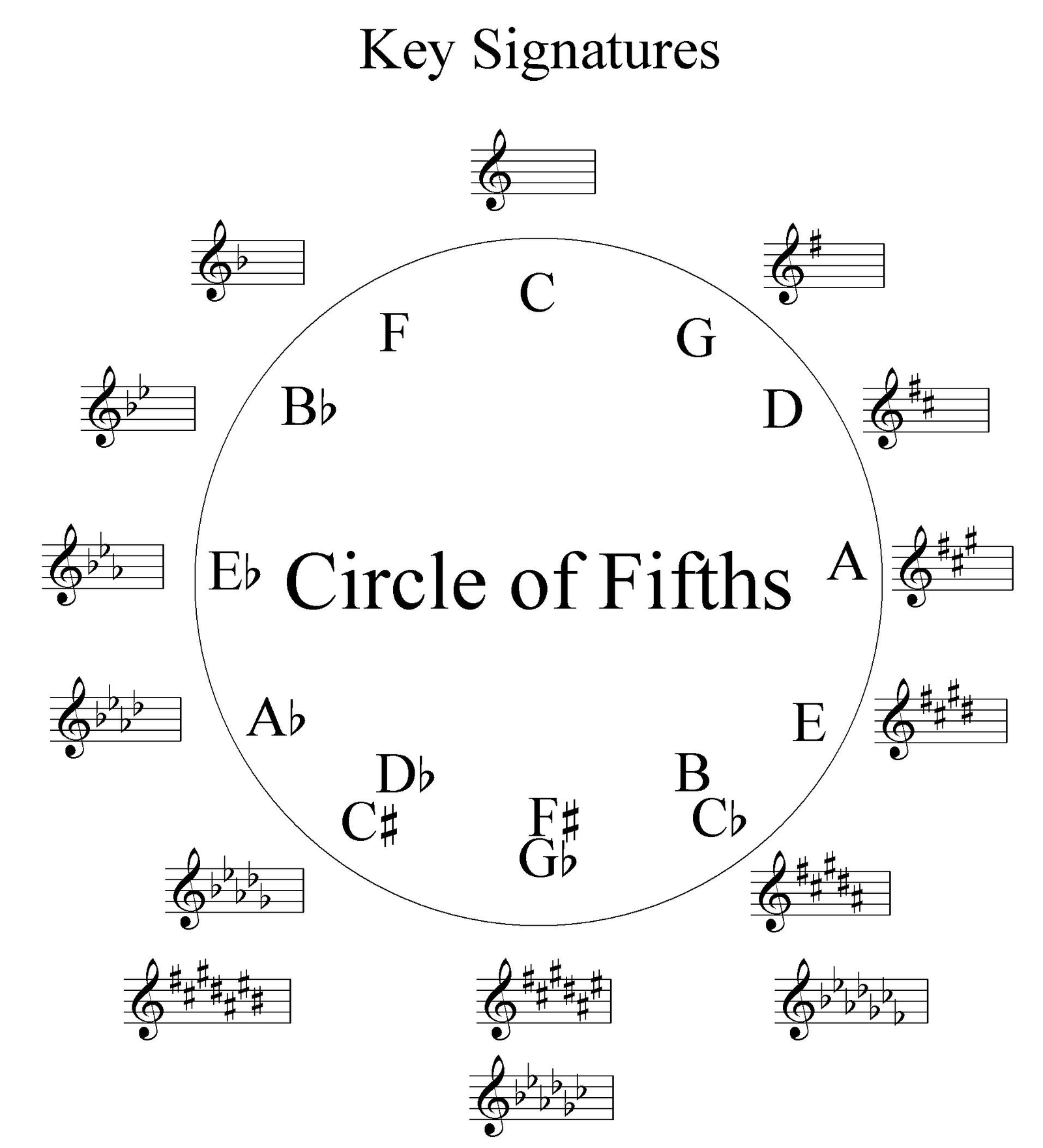Major Key Signatures
A Key Signature is a way to notate all the accidentals common to the key or scale upon which the music or section is based.
Each scale has a unique set of notes that need accidentals.
A key signature is used to show the set of notes that need accidentals.
The key signature is written just to the right of the clef and before the time signature.
The scale that is the foundation for a piece of music is called the key of the piece.
In other words, a song written using the D Major scale would be said to be in the key of D Major.
Below is a D♭ major scale written without a key signature:
𝄀
𝄂
Below is a D♭ major scale written with a key signature:
𝄀
𝄂
Notice that the music is both easier to read and easier to notate.
To review Major Scales see Major Scales.
To review Accidentals see Accidentals.
Order of Accidentals
There is an accepted order and position for each accidental when notating a key signature.
It is important that you memorize both the order and the position.
Notice the order of flats (B, E, A, D, G, C, F) is exactly the opposite of the order of sharps.
If you are a visual learner you might find it easier to memorize the shape the accidentals make on the staff.
Memorizing Key Signatures
There are two ways to determine what major key the key signature represents.
The best way is to memorize the number of accidentals in all the key signatures.
But until you have them memorized here is a simple way to figure out the key:
- If the key signature is sharps, the major key is the note a half step above the last sharp.
In the example below, the last sharp is a G♯, so the major key is A Major (the note a half step above G♯.)
For a review of half-steps see Unisons and Seconds.
- If the key signature is flats, the major key is the second to last flat.
(Unless, of course, there is only one flat, then you must remember that only one flat is the key of F major.)
In the example below, the second to the last flat is a D♭, so the key is D♭ major.
Of course you still must memorize at least C major (no accidentals) and F major (one flat) because the above method will not help for those two keys.
Here is a list of all the major scales and their respective key signatures.
𝄁
𝄁
𝄁
C
𝄁
𝄁
𝄁
𝄁
B♭
𝄁
𝄁
𝄁
𝄁
E♭
𝄁
𝄁
𝄁
𝄁
A♭
𝄁
𝄁
𝄁
𝄁
D♭
𝄁
𝄁
𝄁
𝄁
G♭
𝄁
𝄂
𝄂
𝄂
C♭
𝄂
𝄁
𝄁
𝄁
G
𝄁
𝄁
𝄁
𝄁
D
𝄁
𝄁
𝄁
𝄁
A
𝄁
𝄁
𝄁
𝄁
E
𝄁
𝄁
𝄁
𝄁
B
𝄁
𝄁
𝄁
𝄁
F♯
𝄁
𝄂
𝄂
𝄂
C♯
𝄂
An accidental in a key signature represents all notes of that name.
So an F♯ in a key signature means that all F's are sharp no matter what octave they are in.
Also, just as with notes, it is possible to have enharmonic keys; keys that have more than one name.
The key of B will sound the same as the key of C♭, F♯ sounds like G♭, and C♯ sounds like D♭.
Circle of Fifths
The Circle of Fifths is a name given to a picture used to represent the relationship of the major keys.
If the major keys are arranged in order of increasing number of sharps, then each successive key is the interval of a Perfect 5th from the previous one.
(We will study intervals in the next lesson.)
If we go backwards around the progression then we get the order of flat keys.

